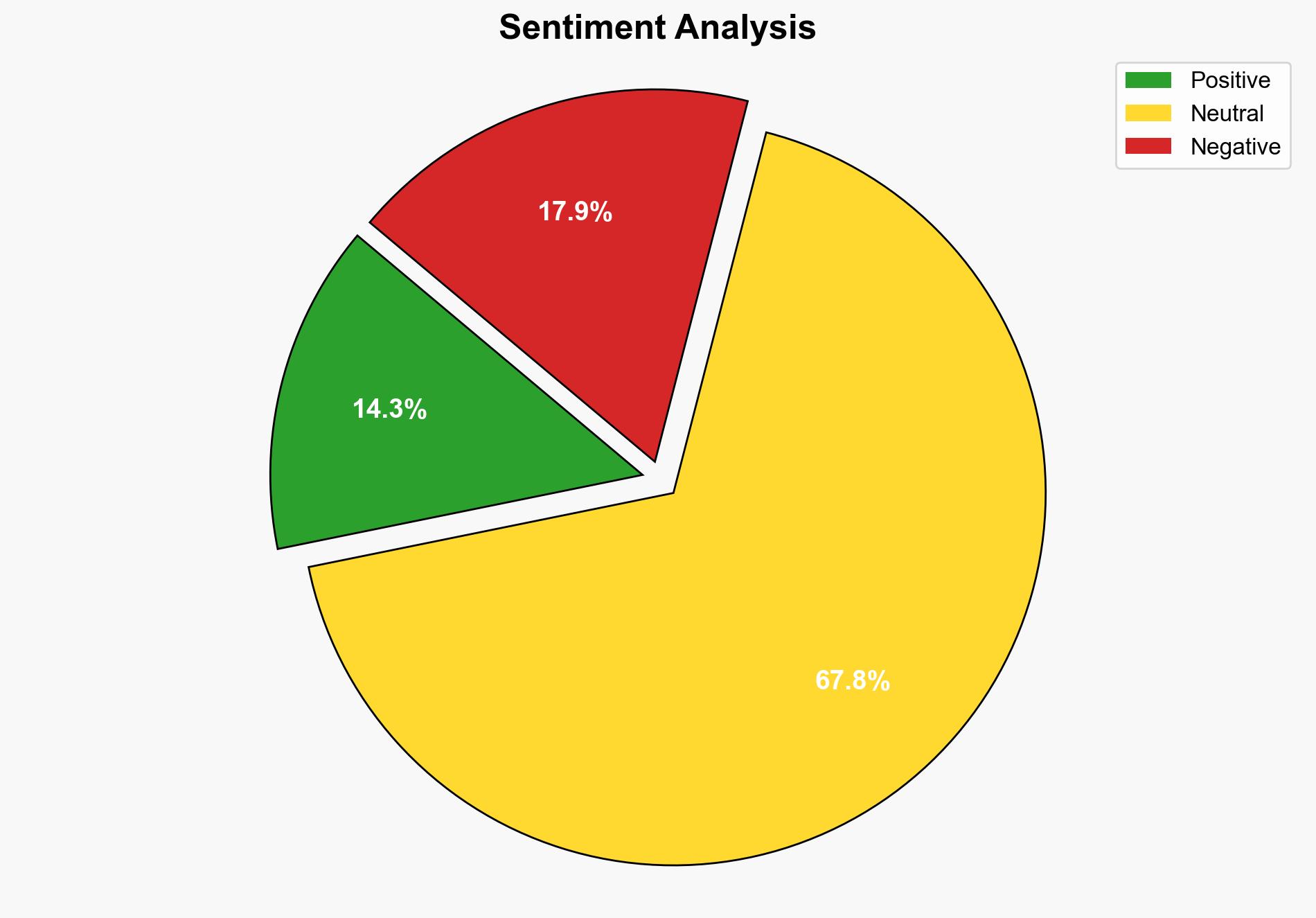Microsoft Fixes Windows Kernel Zero Day in November Patch Tuesday – Infosecurity Magazine
Published on: 2025-11-12
AI-powered OSINT brief from verified open sources. Automated NLP signal extraction with human verification. See our Methodology and Why WorldWideWatchers.
Intelligence Report: Microsoft Fixes Windows Kernel Zero Day in November Patch Tuesday – Infosecurity Magazine
1. BLUF (Bottom Line Up Front)
With a medium to high confidence level, the most supported hypothesis is that the recent Microsoft patch addresses a critical vulnerability that, if left unpatched, could lead to significant security breaches, including mass credential exposure and potential ransomware attacks. It is recommended that organizations prioritize the deployment of this patch to mitigate these risks.
2. Competing Hypotheses
Hypothesis 1: The patch effectively mitigates the zero-day vulnerability, significantly reducing the risk of exploitation by threat actors.
Hypothesis 2: Despite the patch, threat actors may still exploit the vulnerability due to potential flaws in the patch or through alternative attack vectors not addressed by the update.
Hypothesis 1 is more likely given Microsoft’s track record in addressing critical vulnerabilities promptly and the detailed nature of the patch. However, the complexity of the vulnerability and potential for undisclosed attack vectors lend some credence to Hypothesis 2.
3. Key Assumptions and Red Flags
Assumptions: It is assumed that the patch is comprehensive and that organizations will deploy it promptly. It is also assumed that the vulnerability is not being exploited through undisclosed methods.
Red Flags: Delays in patch deployment by organizations, reports of continued exploitation post-patch, and any indications of a broader campaign targeting this vulnerability would be significant red flags.
4. Implications and Strategic Risks
The primary risk is the potential for widespread exploitation leading to server compromises, mass credential exposure, and ransomware deployment. This could have cascading effects on organizational operations, financial stability, and reputation. Additionally, if the patch is ineffective or incomplete, it could lead to a loss of trust in Microsoft’s security measures.
5. Recommendations and Outlook
- Organizations should immediately apply the patch and verify its effectiveness through testing.
- Conduct a thorough review of systems to ensure no prior exploitation occurred.
- Monitor for any new vulnerabilities or attack vectors that may emerge.
- Best Case: The patch is effective, and no further exploitation occurs.
- Worst Case: The patch is flawed, leading to continued exploitation and significant breaches.
- Most Likely Scenario: The patch mitigates the primary threat, but organizations may face attempts at exploitation through other vulnerabilities.
6. Key Individuals and Entities
Mike Walters, President and Founder of Action; Ben McCarthy, Lead Cybersecurity Engineer at Immersive.
7. Thematic Tags
Cybersecurity
Structured Analytic Techniques Applied
- Adversarial Threat Simulation: Model and simulate actions of cyber adversaries to anticipate vulnerabilities and improve resilience.
- Indicators Development: Detect and monitor behavioral or technical anomalies across systems for early threat detection.
- Bayesian Scenario Modeling: Quantify uncertainty and predict cyberattack pathways using probabilistic inference.
Explore more:
Cybersecurity Briefs ·
Daily Summary ·
Methodology





